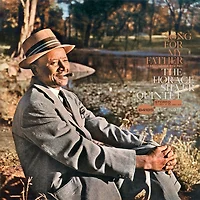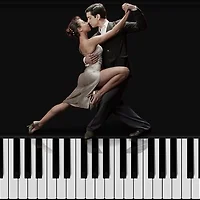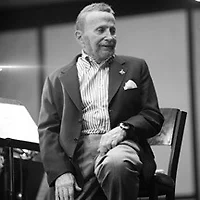The tune I upload for this time is Amazonas by Walter Wanderly.
It use Bossa Nova rhythm but it belongs to Tropical jazz because it sounds like nature from this tune.
(The lyrics is Portuguese from Brazil)
이번에 올리는 영상은 공연대비 연습때 찍은 Walter Wanderley의 Amazonas이다.
Bossa 리듬을 사용하지만 곡에서 자연의 느낌을 받을 수 있으므로 Tropical Jazz에 해당 된다.(가사는 Brazil으로 Portuguese를 쓴다)
<Reference Information: Artist Biography>
Walter Wanderley was a talented and gifted organist with an acute ear for new harmonies. With 46 recorded solo albums in his entire career, both in Brazil and the U.S., he reached number 26 on the Billboard pop charts in September 1966, opening a large pathway of success only menaced by himself and his complex character. Ten years after his death from cancer, with a new fad coming, he was repackaged by the entertainment industry as a mere lounge player, carrying his record sales even further and sending the cost of his out-of-print albums to the stratosphere, but all at the cost of minimizing his significance. It is forgotten that the time lag worked against him and what today is lounge music was then innovative and revolutionary. With all those fans of samba-canção divas feeling personally insulted by those percussive rhythms reminiscent of a Brazilian black tradition that was not dear to the average Brazilian, it has to be stressed that the bossa nova movement, and Wanderley within it, had the role of affirming Brazilian identity in a broader cultural industry which was developed out of the folkloric redoubts. In fact, he also has an upbeat production full of that energy provided by his distinctive staccato stuttering style, immediately reminiscent of authentic Brazilian rhythmic and percussive impetus. He also improvised extended melodic solos without reheated licks, but that was obviously also left out of his most popular albums.
At five, he was already playing the piano. At 12, he attended the Licee of Arts for a year of theory classes, later studying harmony and arranging. Beginning his professional career while still in Recife, a most lively city with a vibrant cultural life, he worked every night either at the piano or at the organ. At 26, in 1958, he moved to São Paulo and immediately became an active player in nightclubs such as the Claridge, the Captain's Bar, and Oásis. Wanderley's first recording was in August 1959 for Odeon, with Carlos Lyra's "Lobo Bobo." Backing his wife, Brazilian singer Isaurinha Garcia (with whom he had a daughter, Monica), he recorded for the second time one month later. At that time, he was Garcia's accompanist and arranger. He would record another six LPs accompanying Garcia and another 19 solo albums in Brazil for several labels; he was left out of some of the credits because of his contract with Philips. Wanderley became known on the artistic scene for recording young artists, like Marcos Valle, Tom Jobim, João Donato, and others, until then with no expression out of the little nightclubs in which they performed on a nightly basis. But as the tunes and arrangements were fun to dance to, the albums sold very well. João Gilberto's João Gilberto (later reissued as O Mito in Brazil and as The Legendary João Gilberto in the U.S. in 1990 by World Pacific) from 1961 also had Walter in it. An impatient Wanderley then bent under Gilberto's oppressive, meticulous direction on March 10. That was the third album Gilberto was recording for Odeon and would be the last. Until then, Gilberto had Tom Jobim as pianist and Aluísio de Oliveira as producer. In spite of his frequent discussions with de Oliveira, the producer was the person who mediated Gilberto's hard relationship with Jobim. But de Oliveira had left Odeon the previous September, and Jobim didn't want to be scheduled for that recording. Gilberto, not knowing how to write music, insisted on expressing his musical vision of overall arrangements by singing, and that not only included the tones themselves, but the expression, timbre, and articulation. This drove Wanderley mad, especially with a certain sound effect of a boat's siren for "O Barquinho" ("Little Boat"), which was never good enough for Gilberto. The next day, Gilberto interrupted the recording of that album, only resuming it five months later with Jobim as musical director. Wanderley went on with his career and life, beginning an association with singer Claudette Soares in 1963, as an arranger and accompanist. His marriage was broken at this period. He also recorded for several renowned Brazilian singers in that time, among them Dóris Monteiro and Geraldo Vandré. It was when Tony Bennett saw Wanderley during a Brazilian tour and was taken by his playing. He urged Wanderley to move to the U.S. and, he himself talked about him to Verve Records producer Creed Taylor, also giving Taylor some of Wanderley's albums. After some insistence, Taylor sent contracts for Wanderley and his trio to record a single. So in 1966, they recorded brothers Marcos and Paulo Sérgio Valle's "Samba de Verão" ("Summer Samba"). It was an instant success, with radio stations playing it four or five times per hour. In that same year, the LP Rain Forest came out, also selling very well and was certified platinum (one million units sold) in two years. The trio accompanied Astrud Gilberto on her A Certain Smile, a Certain Sadness album, also in 1966. He would record six more solo LPs or singles for Verve until the next year, and ten more in his career in the U.S. He always sold well and had a full performing schedule, in which local presentations at the San Francisco area were interspersed with some tours to Mexico. He never did return to Brazil after moving to the U.S. and he went on with his life until death caught up with him.
<Album & Official video>
By the way, our group recently have designed poster for concert.
It is first time to play for 2 hours without break since I have performed in jazz café in last December.
The location for performance is Shadbolt centre for the art near deer lake in Burnaby.
While I got around, I took a video about inside of the centre.
그나저나 간만에 공연을 한다고 포스터가 나왔다. 내가 VJJ(Vancouver Jazzy Jams)에 들어와서 12월에 카페에서 가볍게 공연 한번 해보고,
이렇게 공연장에서 2시간 정도 타이트하게 공연해보는건 처음이다. 공연장소는 내가 매달 연주하러가는 Shadbolt 센터이다.
이참에 여기 센터 한바퀴 돌면서 영상을 촬영했다.
<Shadbolt Art Centre tour video>
Time: 2017.9.17 12:12 PM
Location: 6450 Deer Lake Avenue, Burnaby
<Poster Image>
Wait a minute~ It shows my position is piano & keyboard? Actually, I play percussion only with the bald man.
I think the description has something wrong. In this band, my nickname is Ken in short. But we have 2 more Kens(Guitar, Percussionist).
So, the number of people whose name are Ken is 3. Once somebody call Ken, every Ken replies.
So if somebody want to call me, they should add pianist before Ken. (Or Mr.Kong is fine as well)
잠깐, 나 피아노&키보드라고 되있네? 나 저기 빡빡이 아저씨랑 퍼커션만 연주하는데 뭔가 잘못된 것 같다.
이 밴드 보면 내이름이 줄여서 Ken인데 여기 나말고 기타아저씨랑 퍼커션 아저씨가 Ken이다. 그래서
Ken이라는 이름의 소유자가 3명이다. Ken이라고 부르면 우리 3명이 응답하기 때문에 나를 부를려면 Pianist Ken이라고 불러야 한다.
(아님 미스터콩라던가~)
<Practice Video>
Time: 2017.8.26 9:58 PM
Location: 3528 Kingsway, Vancouver, BC
To describe our players' name,
Vocal:Bryony Keyboard:Chihiro Drum:Hermie Bass:Bench Piano:Tamami
Time: 2017.9.17 4:04 PM
Location: 6450 Deer Lake Avenue, Burnaby
Our colleagues in office are always asking me to write articles in English.
For now on, I'm going to upload in Eng.(I could or couldn't)
'Jazz > Latin' 카테고리의 다른 글
| BLUE BOSSA(LATIN VERSION) (0) | 2017.11.03 |
|---|---|
| Song for my father (0) | 2017.11.01 |
| Sway (0) | 2017.07.16 |
| Shadow of your smile (0) | 2013.06.29 |
| Morning(Jazz) (0) | 2013.06.20 |






